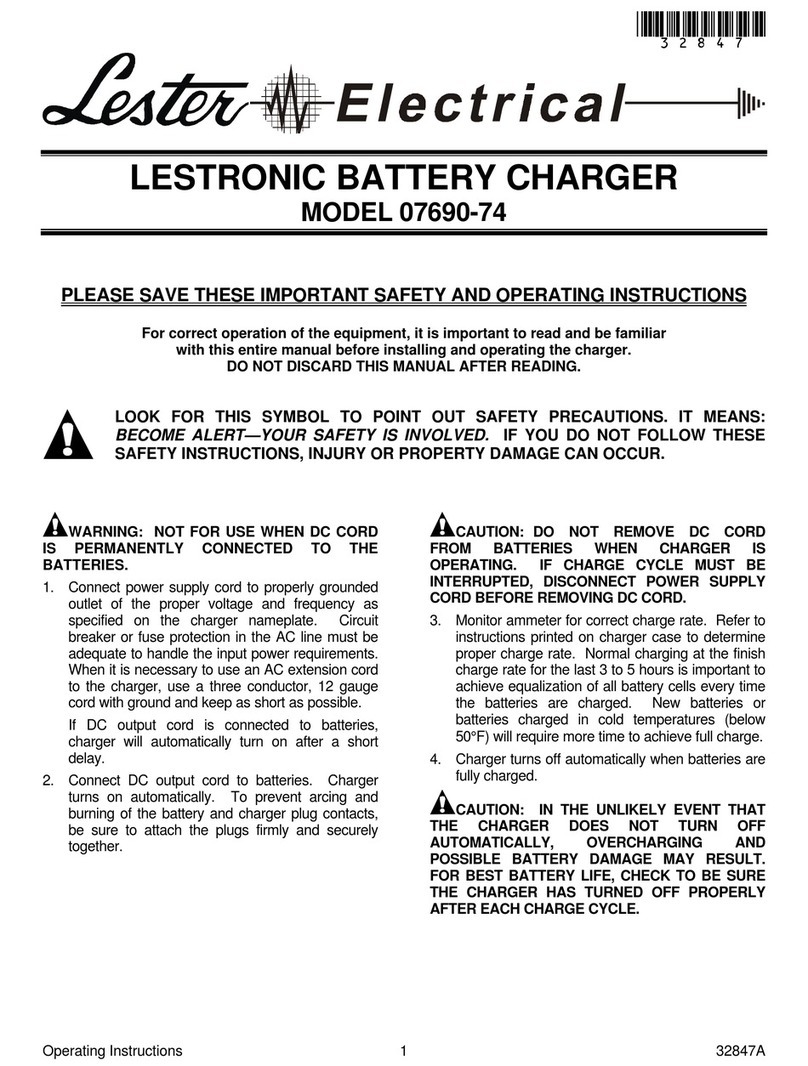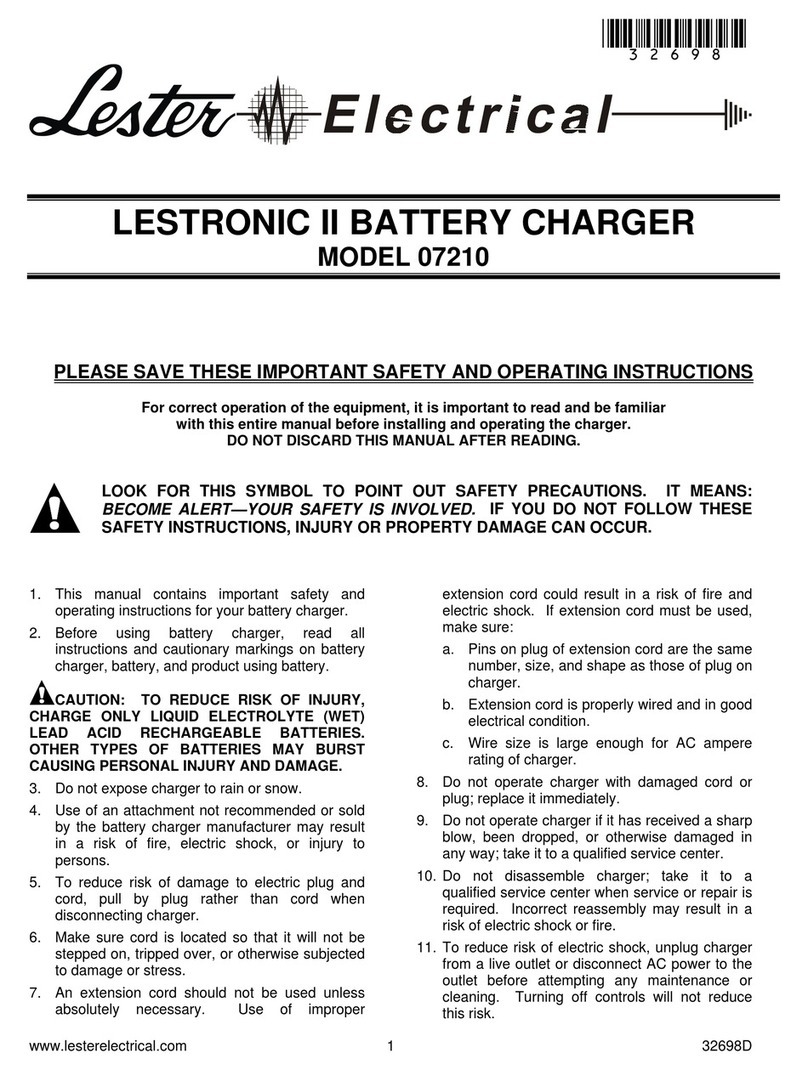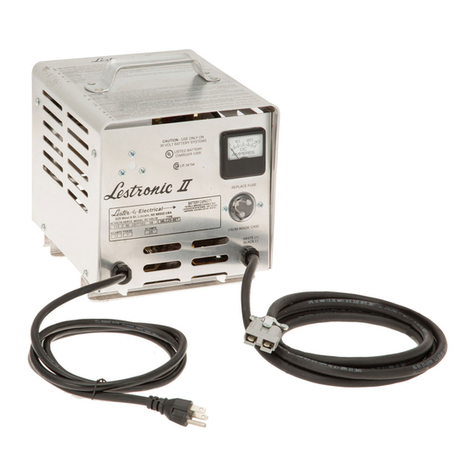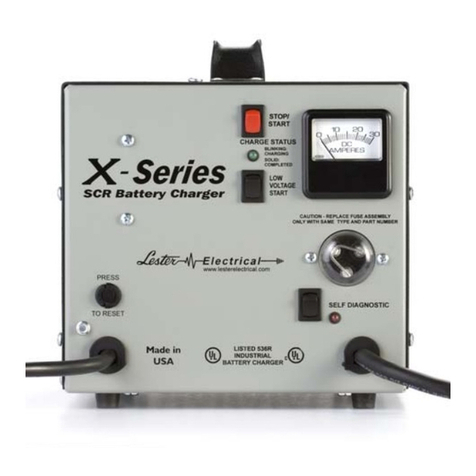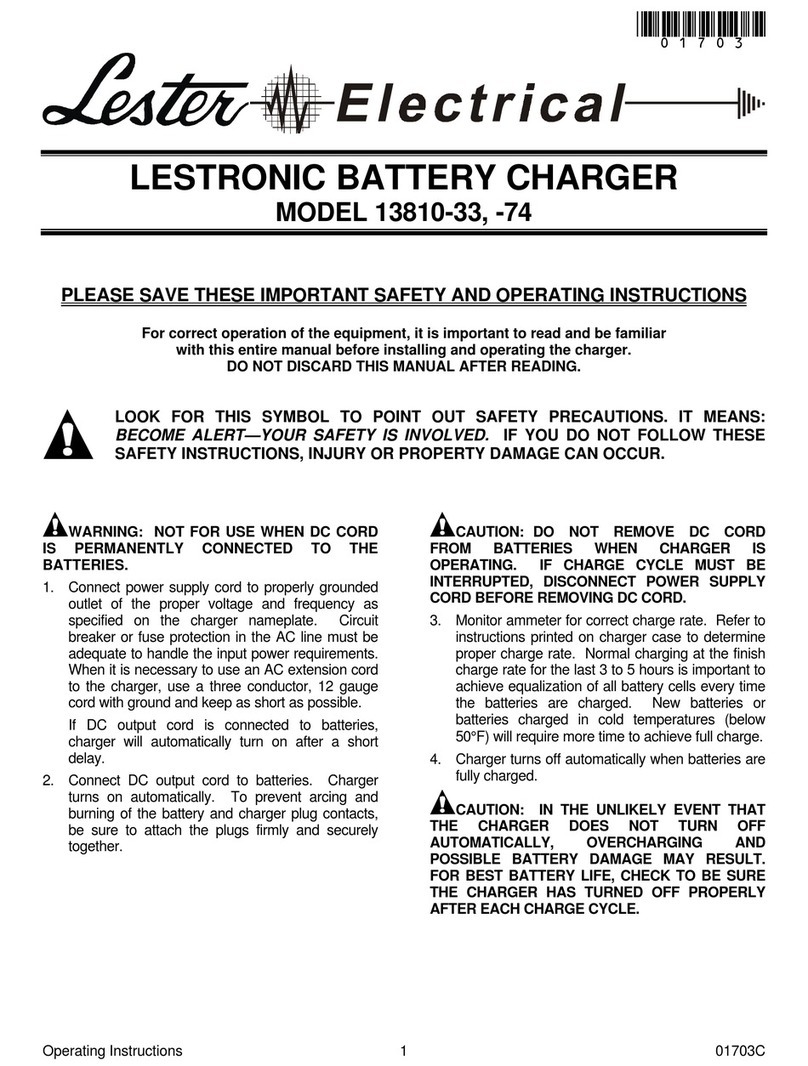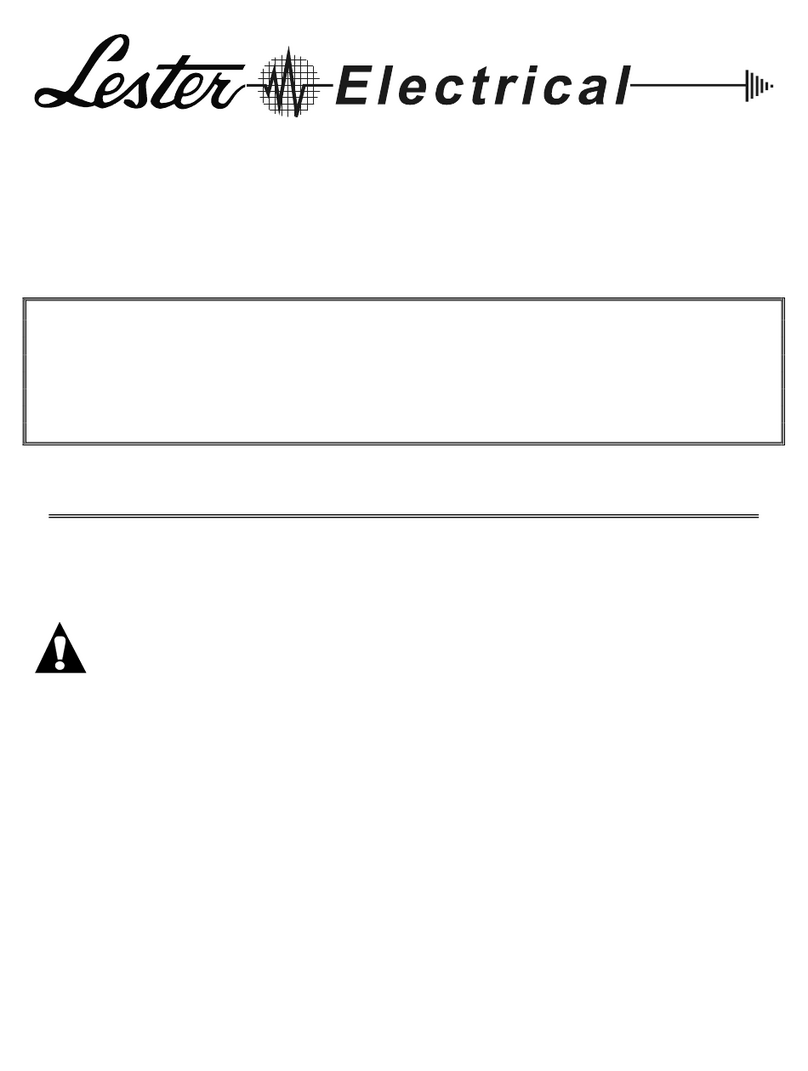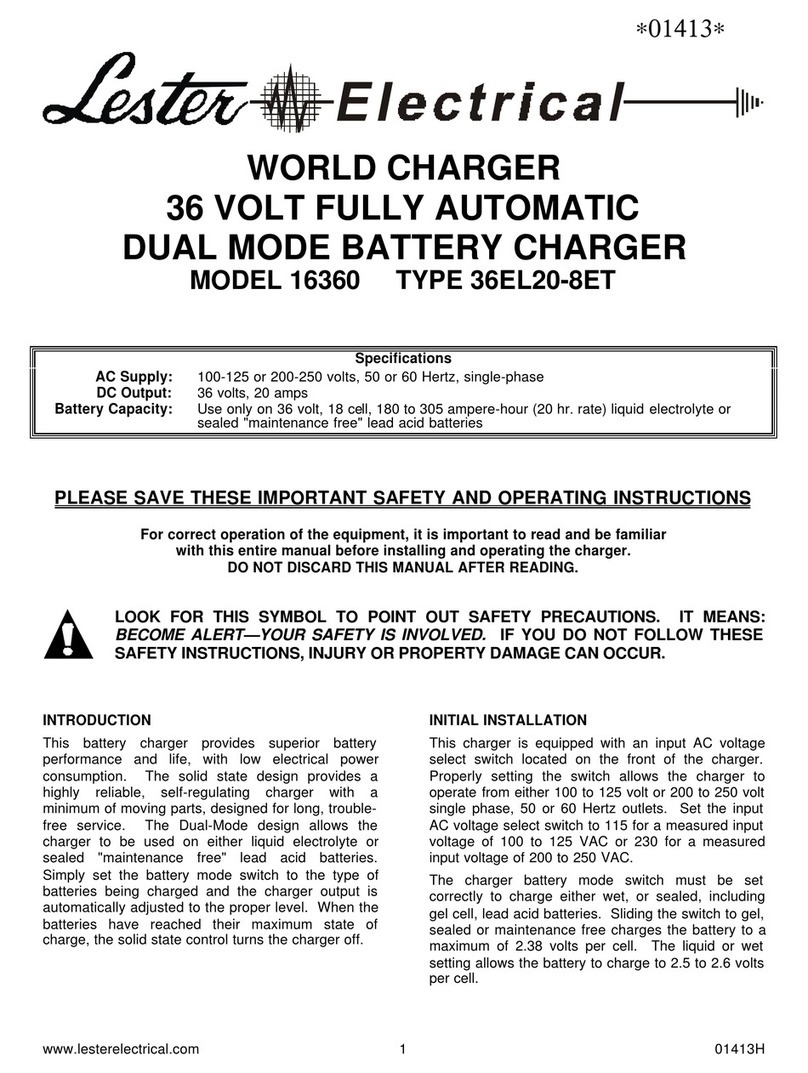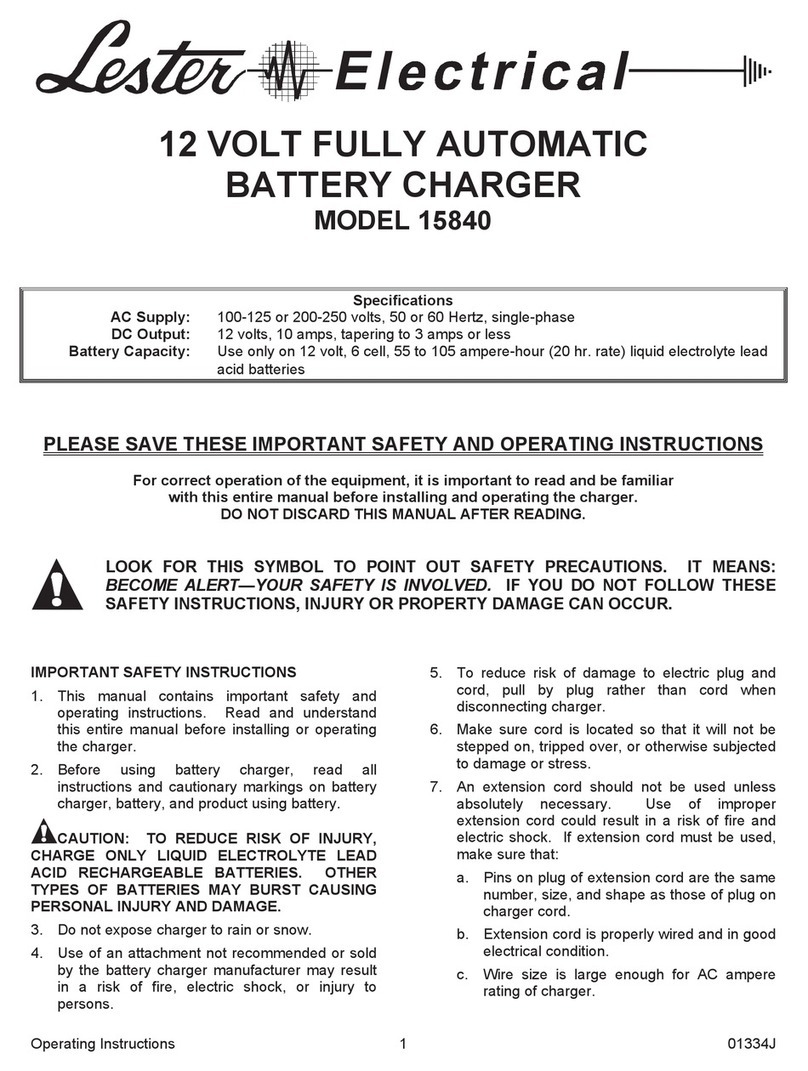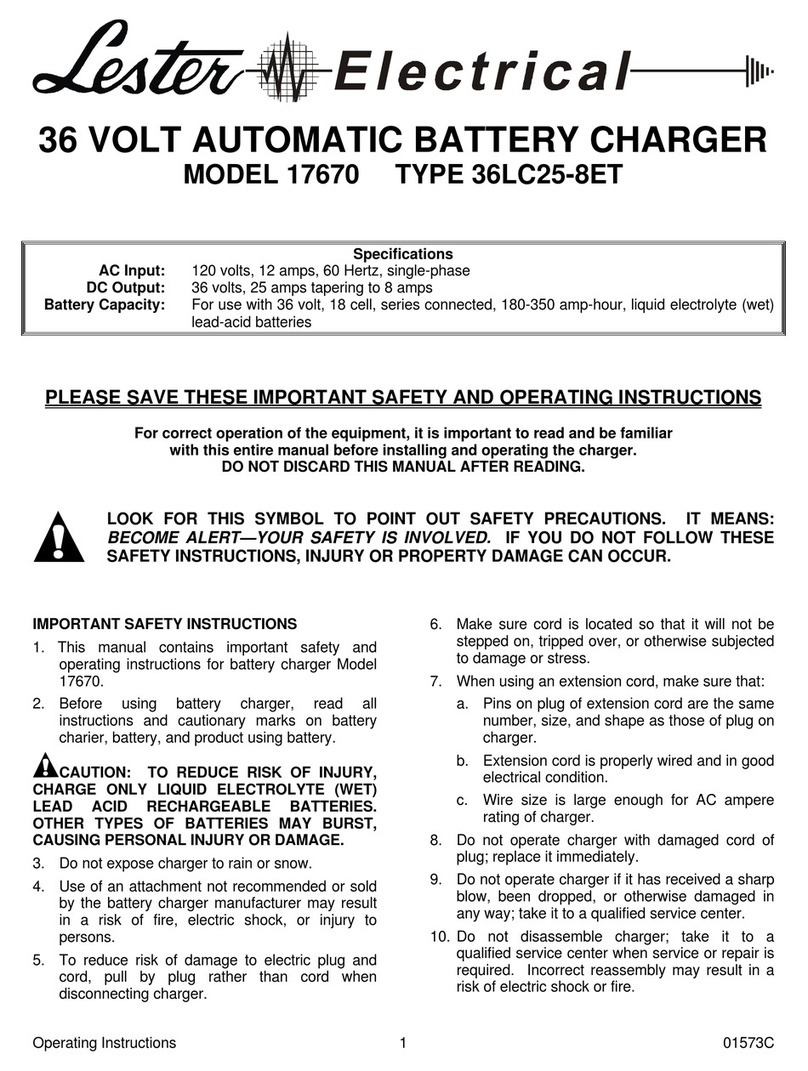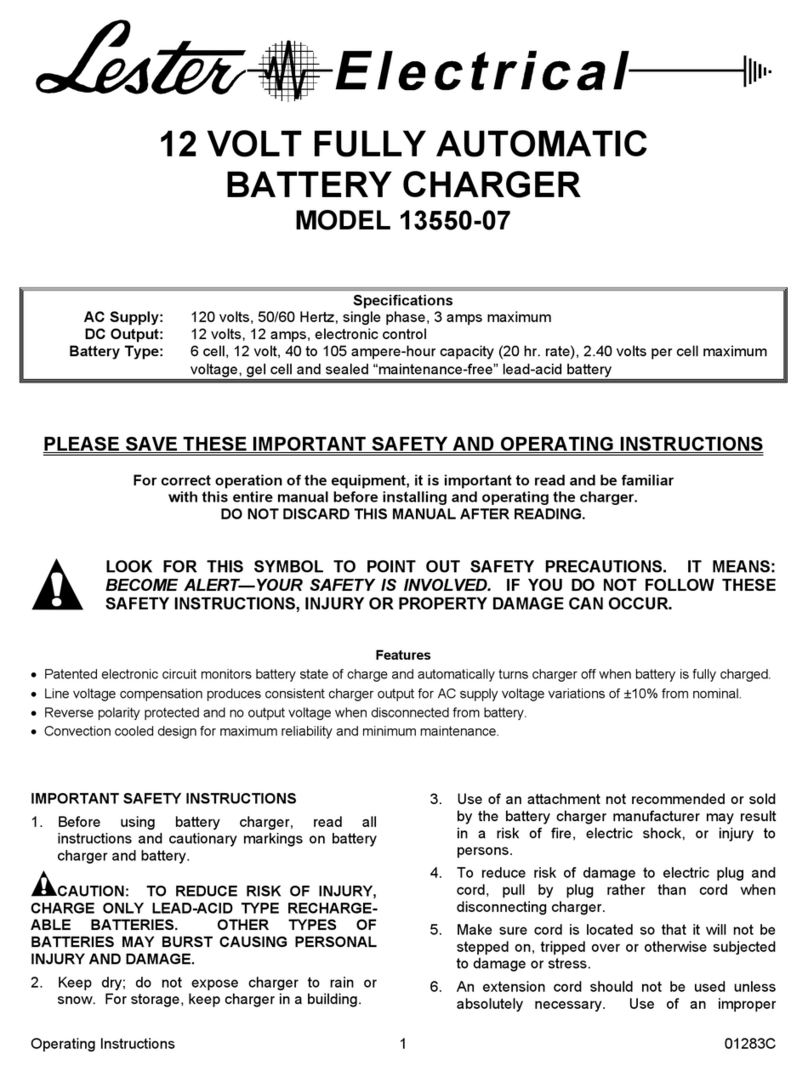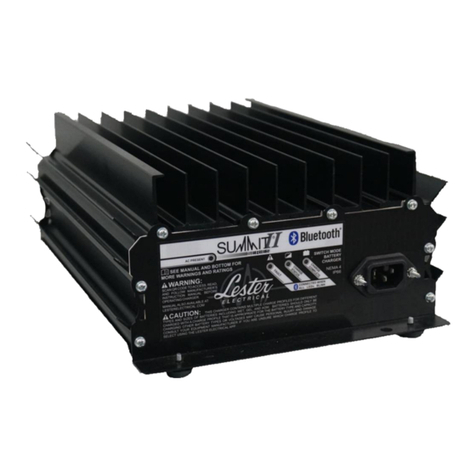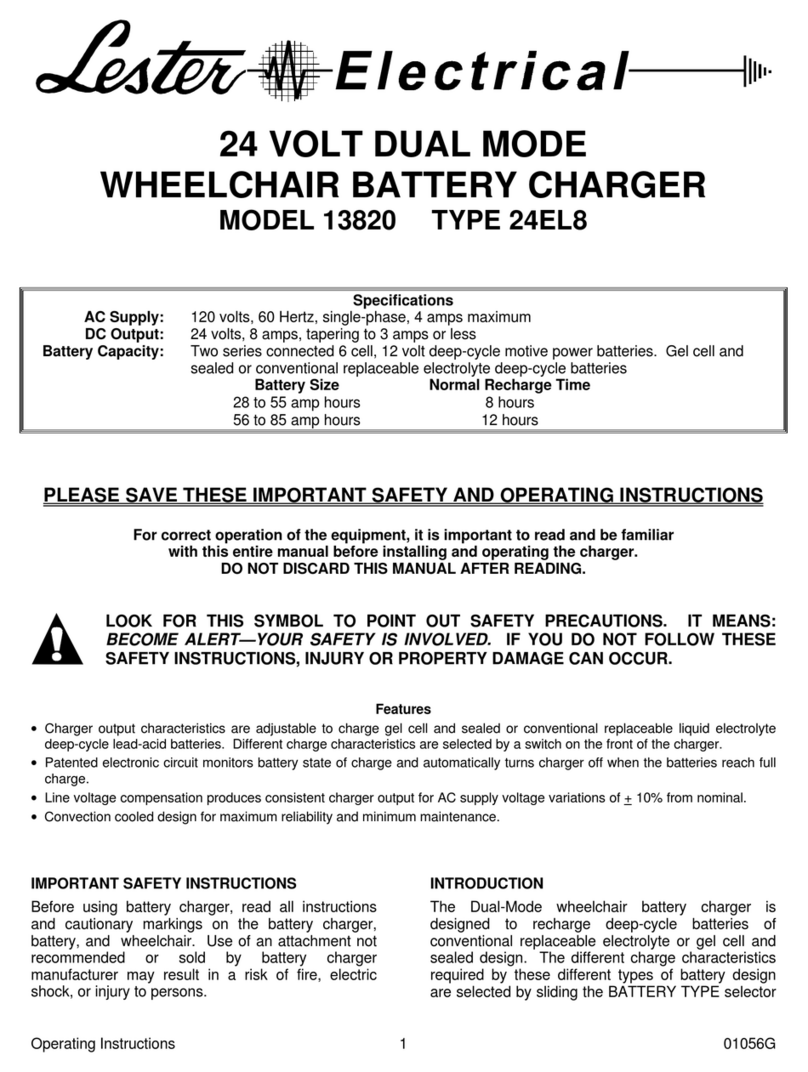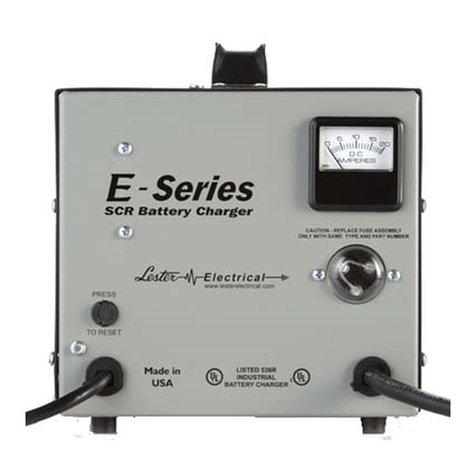
Operating Instructions 201316H
test good. Move the switch to the "AUTO"
position if it is not already there.
3. Connect the charger DC output connector to the
battery connector. The charger will auto-
matically turn on two to five (2-5) seconds after
the DC output cord is connected.
Ammeter indicates when charger is operating.
Correct initial charge rate should be around 40
amps depending upon the condition and depth
of discharge of the batteries. Under normal
conditions, the charge rate will taper to 10 amps
at finish.
Total recharge time will vary depending on depth
of discharge. Under normal conditions,
recharge time will not exceed 14 hours.
DANGER: RISK OF ELECTRIC SHOCK! DO
NOT TOUCH UNINSULATED PORTIONS OF THE
OUTPUT CONNECTOR OR UNINSULATED
BATTERY TERMINALS.
CAUTION: IN THE UNLIKELY EVENT THAT
THE CHARGER DOES NOT TURN OFF
AUTOMATICALLY, OVERCHARGING AND
POSSIBLE BATTERY DAMAGE MAY RESULT.
FOR BEST BATTERY LIFE, CHECK TO BE SURE
THE CHARGER HAS TURNED OFF PROPERLY
AFTER EACH CHARGE CYCLE.
STORAGE
When the machine is not in use, charge the batteries
once each week.
PROPER CARE OF MOTIVE POWER BATTERIES
Motive power batteries are subjected to severe deep
cycle duty on a daily basis. Although these batteries
are designed to withstand such duty, the following
precautions must be observed to obtain good
performance and maximum cycle life.
CAUTION: ALWAYS WEAR PROTECTIVE
EYE SHIELDS AND CLOTHING WHEN WORKING
WITH BATTERIES. BATTERIES CONTAIN ACIDS
WHICH CAN CAUSE BODILY HARM. DO NOT
PUT WRENCHES OR OTHER METAL OBJECTS
ACROSS THE BATTERY TERMINAL OR
BATTERY TOP. ARCING OR EXPLOSION OF
THE BATTERY CAN RESULT.
1. When installing new batteries, be sure the
polarity of each battery and overall battery pack
is correct. Due to the electrical characteristics of
this charger, it is possible to improperly hook up
the batteries and not blow the fuse when
charging. Battery and/or charger damage can
result.
2. New batteries should be given a full charge
before their first use because it is difficult to
know how long the batteries have been stored.
3. Limit the use of new batteries for the first five
cycles. New batteries are not capable of their
rated output until they have been discharged
and charged a number of times.
4. Do not excessively discharge the batteries.
Excessive discharge can cause polarity reversal
of individual cells resulting in complete failure
shortly thereafter. Limited use of new batteries
will minimize the risk of cell reversals.
5. Maintain the proper electrolyte level by adding
water when necessary. Never allow the
electrolyte level to fall below the top of the
battery plates. Electrolyte levels fall during
discharge and rise during charge. Therefore, to
prevent the overflow of electrolyte when
charging, it is mandatory that water be added to
cells AFTER they have been fully charged; do
not overfill. Old batteries require more frequent
additions of water than do new batteries.
6. When the temperature falls below 65°F, the
batteries should be placed on charge as soon as
possible.
7. The tops of the batteries and battery hold-downs
must be kept clean and dry at all times to
prevent excessive self discharge and flow of
current between the battery posts and frame.
8. Follow all operating instructions, cautions, and
warnings as specified in this manual and on the
charger case.
